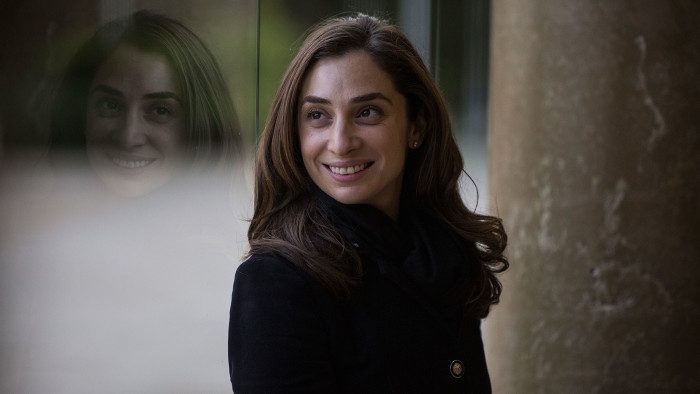How an MBA made a student reboot her artistic plans

Simply sign up to the Business education myFT Digest -- delivered directly to your inbox.
Joy Asfar is Lebanese and grew up in Paris before moving to London aged 18. After a BA in international business at Regent’s Business School London and a masters in art business at the Sotheby’s Institute of Art in London, she managed two art galleries in London before moving to Barcelona in 2015 to take a 19-month MBA at Iese.
My father was an art dealer. From a very young age I went with him to Paris auction houses, gaining a love that inspired a dream to set up a business in the art world. After I completed a masters in art business in London I managed two galleries dealing in Middle Eastern art. Back then, technology never featured in my plans.
That changed when I started an MBA at Iese in Barcelona. The programme showed me how technology has huge potential to disrupt traditional ways of working. The art world can be very exclusive and I feel art should be made more accessible.
As I explored the impact of technology at Iese, I looked at an example of a venture that is making art more available to the wider public than ever before. The Google Cultural Institute is an online collection of millions of exhibits from museums around the world, in photos and videos. It merges arts — one of my passions — and tech, which is obviously the future. I see the commercial art world as being harder to disrupt because you can already bid and see that art online, for instance.
An MBA project that got me interested in technology and underlined how it can help to improve a company was one where we spent two months setting up a business over the summer, critiqued by our teachers and venture capitalists.
Our group developed the idea of an app that would help haulage companies make journeys more efficient by linking delivery trucks with people who need goods delivered. A lorry driving from Paris to Lebanon would not have to return empty, for example.
Creating an app sounds easy but it is very hard when you do not have the product in your hand to convince people to use it. It was a good idea but would need longer than two months to make it happen and would also require some investment to create a product to show to companies.
During that project we were divided into teams. The team becomes your family — you prepare case studies for the next day together. My group included a Brazilian, an Italian, a Briton, a German and an American. Two were consultants, one was from finance, one had worked with the government in Taiwan.
With such different cultures and experiences it becomes a very interesting conversation and you see and learn from how different cultures approach problems.
Diversity was one reason I applied for the course — another was its strong emphasis on entrepreneurship. Having lived in Paris and London I also wanted to move and Iese was my first choice.
When you do an MBA, you learn from the experiences of the other students, so different backgrounds and cultures bring diversity to what you learn on the course. For example, we had to read case studies on companies that had difficulties and prepare them for class, and students would give ideas about how to solve a problem. Coming from a different culture, the likelihood is that you have different views — it enriches you.
I also like the fact that the intake is slightly smaller at Iese. In my year there were about 300 students, which is small compared with other schools. You do end up meeting the majority of students before the end of the year.
The workload for the course was heavy and the first semester was very intense but the course is exciting and the best thing I’ve done in 10 years.
As a result of the MBA, I’ve now decided that working at a company for a couple of years before starting my own business would be an invaluable way of gaining the experience I need.
Setting up a company sounds glamorous and fun but I realised it is hard and that you need to believe very much in your idea — you have to sell it and live for it — and also that the team is extremely important.
Comments